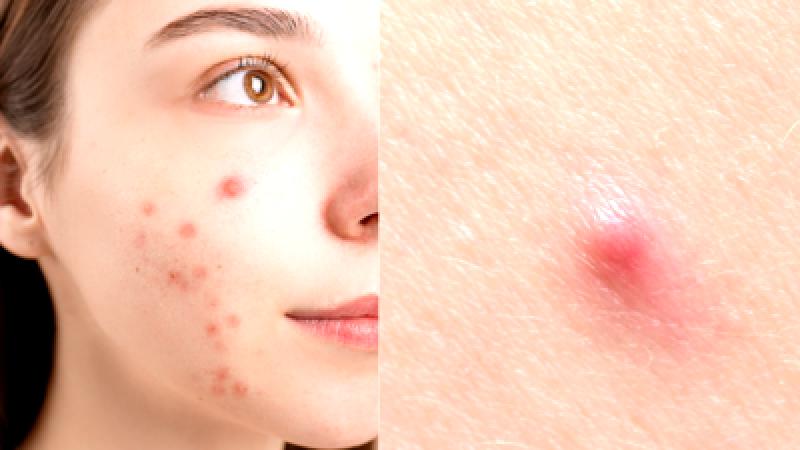
Pimples and acne are often confused, but they have clear distinctions. Acne is a long-lasting skin condition where red, inflamed bumps, known as pimples, appear on the skin. These pimples can vary from mild whiteheads to severe cysts that may result in lasting scars. Pimples, a symptom of acne, can emerge on various parts of the body, such as the face, back, chest, and shoulders. The root cause of acne is the pores becoming blocked by excess sebum, dead skin cells, and pollutants. This blockage, leading to inflammation and pimple formation, can be influenced by hormonal changes, excess sebum production, clogged pores, bacterial growth, and inflammation from skin care products or environmental factors. Pimples manifest in different types, including whiteheads, blackheads, cysts, and nodules.- Papules are small, pink bumps that can be sensitive to touch.
- Pustules are inflamed bumps filled with pus and can be painful.
- Comedones are small bumps that are either open (blackheads) or closed (whiteheads), and are flesh-colored.
Causes of Pimples: Hormonal Changes, Excess Sebum, and Sensitive Skin
Pimples can occur due to hormonal fluctuations, excess sebum production, and sensitivity of the skin. Here's how these factors contribute to the formation of pimples:
- Hormonal changes: Acne can be triggered by fluctuations in estrogen and testosterone levels during puberty, menstruation, pregnancy, or menopause.
- Excess sebum production: Genetics, stress, or certain medications can result in excess sebum production, which can block pores and lead to inflammation.
- Sensitive skin types: Oily or dry skin types can increase the likelihood of developing pimples due to clogged pores or irritation.
Combatting Acne and Pimples: Establishing a Skincare Routine for Healthy Skin
Maintaining a consistent skincare routine is crucial in preventing acne and pimples. Here are some tips to help achieve clear and radiant skin:
- Utilize a gentle, oil-free facial cleanser containing ingredients like salicylic acid, glycolic acid, or benzoyl peroxide.
- Regularly exfoliate to eliminate dead skin cells and unclog pores.
- Opt for non-comedogenic products to prevent pore blockage.
- Refrain from picking or popping pimples to avoid scarring and infection.
- Avoid touching your face to prevent the transfer of bacteria and oils.
- Stay hydrated and maintain a balanced diet to promote healthy skin.
Understanding the causes and types of pimples, coupled with a consistent skincare regimen, can aid in minimizing the appearance of acne and pimples, leading to clearer and healthier skin.











